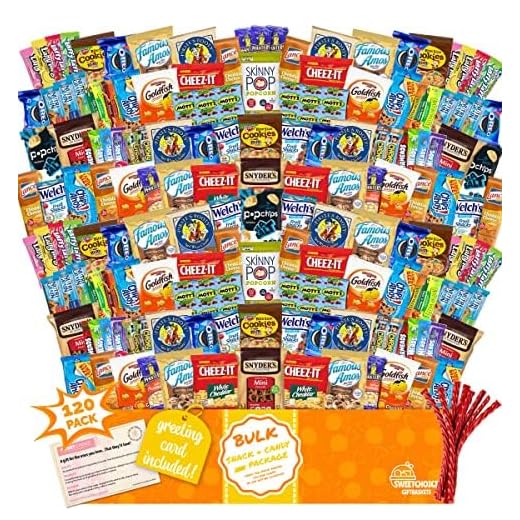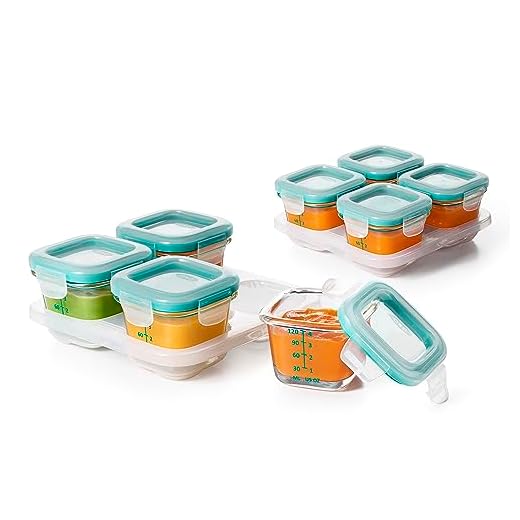



Packaged snacks, fruits, and non-perishable items like nuts or granola bars are generally allowed in cabin storage. Fresh produce, however, often faces restrictions due to agricultural regulations aimed at preventing pests and diseases. It’s crucial to check the current guidelines set by the U.S. Customs and Border Protection (CBP) before traveling.
Liquids, gels, and semi-solids have more stringent rules. Beverages, sauces, and spreads must fit within the standard liquid regulations, typically restricted to containers of 3.4 ounces (100 milliliters) or less, all packed in a single quart-sized bag. Double-check that any food items comply with these requirements to avoid delays at security checkpoints.
Special dietary needs can also influence what items to bring. Consider opting for commercially packaged goods, which often pass inspection more easily. Always declare items when questioned by border agents to ensure a smooth passage through customs. Understanding these specifics can significantly ease the process of carrying consumables while traveling.
Bringing Edibles in Carry-on Bags to the United States
Specific items are allowed while traveling by air to the United States. Non-perishable snacks such as dried fruits, nuts, and granola bars usually face minimal restrictions. Fresh fruits and vegetables are typically not permitted due to agricultural concerns.
Liquids, including sauces, soups, or drinks, must adhere to the 3-1-1 rule: containers no larger than 3.4 ounces (100 milliliters), all fitting in a single, quart-sized clear plastic bag. Any portion exceeding this limit will be confiscated at security checkpoints.
Packaged items, like commercially prepared meals, generally pass inspection without issues. Always keep an eye on expiration dates and ensure packaging remains intact and unopened.
For those with dietary restrictions, consider bringing items like protein bars or shelf-stable alternatives. Exotic or uncommon snacks may attract additional scrutiny, so pack accordingly.
Upon arrival, declare any questionable items to customs agents. Failing to do so can lead to fines. Understanding the regulations ensures a smoother travel experience and avoids unnecessary complications at borders.
Understanding TSA Regulations for Food Items
Pack only solid substances in carry-on storage. Concepts like fruits, nuts, or baked goods are permitted, provided they are not overly perishable. Prioritize items that are readily accessible for security screening. Familiarize with TSA guidelines, as some types of snack or meal items may require special attention or may be restricted altogether.
Liquid or gel-like edibles exceeding 3.4 ounces are prohibited in carry-on bags. This impacts items such as sauces or yogurt. If necessary, consider utilizing travel containers that align with liquid restrictions. Always consider fresh produce and meat as potential risks; these should be inspected closely by security personnel.
For travel ease, select durable and lightweight vessels, such as a best messenger bag for international travel, to transport allowable snacks comfortably. Ensure that all items comply with Customs regulations upon arrival, as international travel may also carry restrictions on certain food products entering the United States.
It’s prudent to consult the official TSA website or contact them directly for any uncertainties regarding specific edible items before departing. Stay informed to enhance a smoother traveling experience.
Permitted Solid Foods vs. Prohibited Items
Certain solid items are accepted while traveling to the United States, such as baked goods, fruits, vegetables, nuts, and packaged snacks. These items must be commercially packaged and sealed, avoiding homemade or unlabelled products. However, fresh fruits and vegetables may face restrictions based on their origin due to pest and disease concerns.
Items Allowed
Snacks like cookies, chips, and candy are permissible. Dried fruits and packaged nuts are also welcome, provided they meet hygiene and packaging standards. Certain grains, cereals, and energy bars are acceptable if they are in their original packaging and have clear ingredient labeling.
Prohibited Items
Specific items are not permitted, including meats, dairy products, and certain types of fresh produce. Cooked or uncooked meats can pose health risks and are generally prohibited. Additionally, homemade items should be avoided due to uncertainty about their contents and safety. For more detailed information, always consult the latest guidelines from the relevant authorities before embarking on the journey.
Guidelines for Bringing Snacks and Treats
Prior approval is necessary for certain items. Comply with regulations regarding solid snacks. Fresh produce and meats are typically restricted and should be avoided. Consider the following guidelines:
- Hard candies, granola bars, and packaged snacks are usually permitted.
- Chocolate and sealed confectionery are often acceptable.
- Homemade items may raise questions during security checks; it’s wise to opt for commercially packaged snacks.
- Check labels for compliance with allergen or ingredient restrictions.
Tips for Smooth Passage
- Keep items in their original packaging to simplify the security process.
- Have snacks readily accessible in case they need to be inspected separately.
- Be mindful of the weight limit for personal belongings to avoid excess baggage fees.
For those interested in local attractions, check out the best aquarium in jacksonville fl.
Special Considerations for Baby Food and Dietary Needs
Baby food remains permissible in specific quantities, typically limited to 3.4 ounces (100 milliliters) per container and placed in a clear, quart-sized bag. However, exceptions apply when traveling with an infant, allowing for larger amounts if they are necessary for the flight.
When traveling with dietary restrictions, travelers may bring sufficient items to meet individual health requirements. This includes preservation of medical necessities that might not be readily available after arrival. Documentation from healthcare providers may facilitate smooth passage through security checkpoints.
| Category | Details |
|---|---|
| Baby Food | Allowed in larger quantities for infants; must be declared at security. |
| Liquid Nutrition | Special diets may permit liquid nutrition sources, exceeding 3.4 ounces. |
| Medical Supplies | Essential items for health conditions are permitted, may require medical proof. |
Prepare all items for screening and consider the necessity of bringing a letter from a healthcare provider detailing the dietary requirements to ensure compliance with regulations. This can significantly streamline the process at security checkpoints.
Packaging Requirements for Foods in Hand Luggage

Secure packaging is essential for all items that will accompany travelers. Use resealable bags, airtight containers, or original packaging to ensure freshness and protection from contamination.
Solid Items
- Wrap sandwiches and baked goods in plastic wrap or foil.
- Utilize durable containers for fruits, vegetables, and snacks.
- Avoid loose items that can easily spill or scatter.
Liquid and Gel Products

- Containers must not exceed 3.4 ounces (100 milliliters).
- All liquids and gels should fit within a quart-sized, clear, resealable bag.
- Ensure that the seal on the bag is intact to prevent leaks during travel.
Labeling food items can facilitate security checks and help identify contents quickly. Clear labeling and organized packing will minimize delay and confusion while passing through checkpoints.
What to Expect at Security Screening for Food Items
Arrive prepared for inspection of all consumables during the security check. Security personnel will focus on identifying any prohibited substances, so items should be easily accessible in a separate container or bag. Be ready to present snacks and other products for manual inspection if requested.
Visual Inspection
Expect security agents to conduct a visual examination of all packaged goods. Clear, original packaging is beneficial, as it allows screeners to quickly determine contents. Homemade items require extra caution; having them clearly labeled can ease the process.
Excessive Quantities

Bringing excessive amounts of any consumable may raise questions and lead to further scrutiny. Limiting quantities to reasonable personal use can facilitate a smoother experience. For liquids, adhere to TSA liquid rules, which restrict containers to 3.4 ounces (100 milliliters) and require them to fit within a quart-sized bag.
Stay informed about specific regulations for certain items like gels or creams, as they may also be subject to restrictions. Always have a backup plan, should any snacks be flagged as potential concerns during screening.
FAQ:
Can I bring homemade food in my hand luggage to the USA?
Yes, you can bring homemade food in your hand luggage to the USA, but there are specific regulations you should be aware of. Generally, solid foods like bread, cookies, and sandwiches are allowed. However, liquids, such as soups, sauces, or dressings, need to comply with the TSA’s 3-1-1 liquids rule, meaning they must be in containers of 3.4 ounces or less and all containers must fit in a single quart-sized zip-top bag. Be cautious with perishable items, as they may not be allowed depending on their nature and the state of origin.
Are there restrictions on bringing snacks into the USA?
Yes, there are restrictions on bringing snacks into the USA, especially when it comes to items that contain meat, dairy, or fresh fruits and vegetables. For instance, commercially packaged snacks such as chips, granola bars, and candy are generally permitted. However, homemade snacks or those containing meat, like beef jerky, may face scrutiny. It’s best to check the USDA Animal and Plant Health Inspection Service guidelines before traveling to avoid complications at customs.
What types of fruits and vegetables can I take in my carry-on luggage?
When traveling to the USA, you can bring certain fruits and vegetables in your carry-on, but many fresh produce items are restricted or prohibited. Apples, bananas, and oranges are typically allowed, while items like potatoes and certain berries may be forbidden due to agricultural regulations. To ensure compliance, it’s advisable to consult the USDA’s website for a list of permissible items before packing your luggage.
Can I take beverages in my hand luggage?
Generally, beverages are restricted in hand luggage due to the TSA’s 3-1-1 liquid rule, which allows containers of 3.4 ounces (100 ml) or less. These must fit into a quart-sized zip-top bag. However, you can purchase drinks after passing through security at the airport. Always check with your airline for any additional rules regarding beverages.
What should I do if I’m unsure about bringing a specific food item to the USA?
If you are uncertain about whether a specific food item can be brought into the USA, the best course of action is to check the official websites such as the TSA or the USDA Animal and Plant Health Inspection Service. These sites provide updated and detailed information about what food items are allowed. Additionally, when in doubt, declaring the item to customs upon arrival can help avoid potential fines or confiscation.








